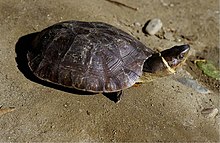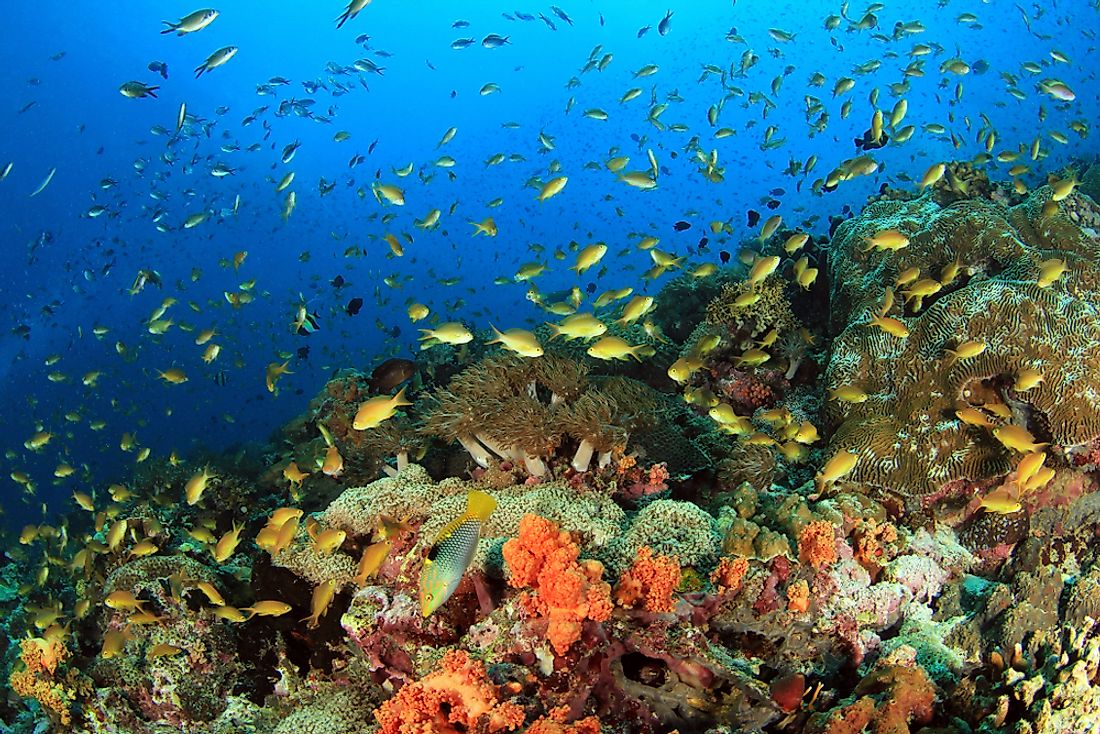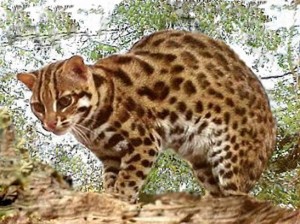TOP 10
CHALLENGE
For today's blog I'm gonna talked about the top 10 challenge that I did so at first when I read the instruction I saw that i can pick any category I want, so I went for "Top 10 Philippines most beautiful native sea and land animals". So lets get into it!
This is the top 10 animals that i choose for this challenge and so what I'm gonna do is try to explain what these animals is!
"LAND ANIMALS"
#1.Philippine eagle- The Philippine eagle, also known as the monkey-eating eagle or great Philippine eagle, is an endangered species of eagle of the family Accipitridae which is endemic to forests in the Philippines. It has brown and white-coloured plumage, a shaggy crest, and generally measures 86 to 102 cm (2.82 to 3.35 ft) in length and weighs 4.04 to 8.0 kg (8.9 to 17.6 lb).It is considered the largest of the extant eagles in the world in terms of length and wing surface, with Steller's sea eagle and the harpy eagle being larger in terms of weight and bulk.[2][3] Among the rarest and most powerful birds in the world, it has been declared the Philippine national bird.[4][5] It is critically endangered, mainly due to massive loss of habitat resulting from deforestation in most of its range. Killing a Philippine eagle is punishable under Philippine law by up to 12 years in prison and heavy fines.In history a study of the skeletal features in 1919 led to the suggestion that the nearest relative was the harpy eagle.The species was included in the subfamily Harpiinae until a 2005 study of DNA sequences which identified them as not members of the group, finding instead, that the nearest relatives are snake eagles (Circaetinae), such as the bateleur. The species has subsequently been placed in the subfamily Circaetinae.
#2.Maral(Visayan Leopard cat)-
These leopard cats are one of the most cutest and rare cat you can ever seen!. you can only
find these mammals in the Philippine islands of Panay and Negros and some on Cebu in Masbate. These cats have dark ochre to buffy fawn with large and dark spots. Its skull is a little narrower than of Sumatran leopard cat and Bornean leopard cat. Prionailurus bengalensis (Leopard Cat) is a species of mammals in the family cats. It is listed in CITES Appendix II. It is found in the Palearctic and the Indo-Malayan Realm. It is a solitary, nocturnal vertivore.
#3.Tarsier- Tarsier, (family Tarsiidae), any of six or more species of small leaping primates found only on various islands of Southeast Asia, mostly in the Philippines.
These Tarsiers are intermediate in form between lemurs and monkeys, measuring only about 9–16 cm (3.5–6 inches) long, excluding a tail of about twice that length.However, like monkeys, apes, and humans, the nose is dry and hair-covered, not moist and bald as is that of lemurs. The eyes and placenta are also simiiform in structure.These tarsier’s small brain has an enormous visual cortex to process information from the large goggling eyes, the animal’s most striking feature. The size of the eyes and visual cortex is probably made necessary by the absence of a reflective layer (tapetum) that the eyes of most other nocturnal mammals possess. The tarsier is also unusual in having especially long ankle bones (tarsals, hence the name tarsier), a short body, and a round head that can be rotated 180°. The face is short, with large, membranous ears that are almost constantly in motion. The fur is thick, silky, and coloured gray to dark brown. The tail is scaly on the underside like a rat’s; in most species it has an edging or terminal brush of hair.They also are the only entirely carnivorous primates, preying on insects, lizards, and snakes. Clinging upright to trees, they press the tail against the trunk for support. Their grip is also aided by the tips of their digits, which are expanded into disklike adhesive pads. Tarsiers move through the forest by launching themselves from trunk to trunk propelled by their greatly elongated hind limbs.
#4.visayan hornbill-
The Visayan hornbill is a hornbill found in rainforests on the islands of Panay, Negros, Masbate, and Guimaras, and formerly Ticao, in the Philippines. It formerly included all other Philippine tarictic hornbills as subspecies, in which case the common name of the 'combined species' was shortened to tarictic hornbill.This is a highly endangered species. The total population is estimated at 1800 individuals. There also has been a heavy decline in population due to hunting and loss of habitat caused by deforestation. The subspecies ticaensis was described as "abundant" in 1905, but almost the entire forest on the island was replaced by plantations and settlements in the 20th century. The last time the Ticao tarictic was seen was in 1971, and it is now likely to be extinct. If confirmed, this is the first taxon of hornbill to go extinct in recorded history; many other taxa in the family are now at risk.
#5.Tragulus nigricans(Philippine mouse-deer)-
The Philippine mouse-deer (Tragulus nigricans), also known as the Balabac chevrotain or pilandok (in Filipino), is a small, nocturnal ruminant, which is endemic to Balabac and nearby smaller islands (Bugsuk and Ramos) southwest of Palawan in the Philippines.The Philippine mouse-deer can be classified as a r-selected species. This type of organism lives in habitats that can be described as unstable or changing. Those falling under this category normally reach sexual maturity at a young age. T. nigricans is thought to reach sexual maturity at 5 months of age. R-selected species also have small body sizes and normally have short lifespans. The mouse-deer has been estimated to live about 14 years and usually produces one offspring per litter. Two offspring can occur, but is extremely rare. The gestation time ranges from 140 to 177 days.
That's all for the land animals lets go to the sea creatures we got there!
#6.Dugong-
Dugong is a medium-size marine mammal. It is one of four living species of the order Sirenia, Which also includes three species of manatees.The dugong is the only sirenian in its range, which spans the waters of some 40 countries and territories throughout the Indo-West Pacific. The dugong is largely dependent on seagrass communities for subsistence and is thus restricted to the coastal habitats which support seagrass meadows, with the largest dugong concentrations typically occurring in wide, shallow, protected areas such as bays, mangrove channels, the waters of large inshore islands and inter-reefal waters. The northern waters of Australia between Shark Bay and Moreton Bay are believed to be the dugong's contemporary stronghold.
Dugong is a medium-size marine mammal. It is one of four living species of the order Sirenia, Which also includes three species of manatees.The dugong is the only sirenian in its range, which spans the waters of some 40 countries and territories throughout the Indo-West Pacific. The dugong is largely dependent on seagrass communities for subsistence and is thus restricted to the coastal habitats which support seagrass meadows, with the largest dugong concentrations typically occurring in wide, shallow, protected areas such as bays, mangrove channels, the waters of large inshore islands and inter-reefal waters. The northern waters of Australia between Shark Bay and Moreton Bay are believed to be the dugong's contemporary stronghold.
Like all modern sirenians, the dugong has a fusi form body with no dorsal fin or hind limbs. The forelimbs or flippers are paddle-like. The dugong is easily distinguished from the manatees by its fluked, dolphin-like tail, but also possesses a unique skull and teeth. Its snout is sharply down turned, an adaptation for feeding in benthic sea grass communities. The molar teeth are simple and peg-like unlike the more elaborate molar dentition of manatees.The dugong has been hunted for thousands of years for its meat and oil. Traditional hunting still has great cultural significance in several countries in its modern range, particularly northern Australia and the Pacific Islands. The dugong's current distribution is fragmented, and many populations are believed to be close to extinction. The IUCN lists the dugong as a species vulnerable to extinction, while the Convention on International Trade in Endangered Species limits or bans the trade of derived products. Despite being legally protected in many countries, the main causes of population decline remain anthropogenic and include fishing-related fatalities, habitat degradation and hunting. With its long lifespan of 70 years or more, and slow rate of reproduction, the dugong is especially vulnerable to extinction.

#7.Philippines Green Sea
Turtle-
Siebenrockiella leytensis is a species of freshwater turtle endemic to the Philippines. It is classified as critically endangered It is known as the Philippine forest turtle, the Philippine pond turtle, the Palawan turtle, or the Leyte pond turtle. Despite the latter common name, it does not occur in the island of Leyte but is instead native to the Palawan island group. It is locally known as bakoko in Cuyonon.
Philippine forest turtles are readily recognizable by their ginkgo-shaped vertebral scutes and a pale white to yellow line traversing across its head behind the ears. The previous characteristic has earned it the nickname of 'bowtie turtle'.The skin of the legs, body, and neck of this creature were rough in appearance and being covered in tiny tubercles.It's head is brown in color and sometimes speckled at the temples with light brown, orange, or red spots on it.
#8.Philippine Whale Shark-
The Philippines is one of the best places in the world to view whale sharks, and they can be seen in a natural, sustainable way without the need for human interaction. Whale sharks in Oslob, Cebu are hand fed to guarantee sightings for tourists 365 days a year.The whale shark's flattened head sports a blunt snout above its mouth with short barbels protruding from its nostrils. Its back and sides are gray to brown with white spots among pale vertical and horizontal stripes, and its belly is white. Its two dorsal fins are set rearward on its body, which ends in a large dual-lobbed caudal fin (or tail).#9.Dalagang Bukid Fish(Yellow Tail Fusilier Fish)-The Philippine Dalagang Bukid Fish is also known as the Yellow Tail Fusilier Fish. The translation for Dalagang Bukid means Mountain Maiden and the fish was named because of red underside of the fish resembles the dress of the filipinas dress they wore in the Mountains. This is a fairly common fish in the Philippines. Dalagang bukid can translate as “country maiden,” a folksy phrase that often appears in old kundiman love songs. The fish shares its name with the first Filipino feature film (released 1919 and now lost), in which the titular dalaga is a downtrodden flower vendor. In Capiznon and other Hiligaynon languages, bukid tends to have less tame connotations―not the familiar world of rice paddies and bahay kubo but the mountains, still a realm of mysticism and possible danger in the lowland imagination. But for the Panay Bukidnon, an indigenous people who call themselves the Tumandok or Suludnon, the bukid is home.
 #10.Native Fish In The Philippines-
#10.Native Fish In The Philippines-With more than 20,000 miles of marine coastlines and an abundance of freshwater resources, the Philippine archipelago houses many native fish species.The many islands, reefs, and the Philippines continental plate provide habitat to many fish species both endemic and native. The Speckled goby fish finds a home in the marine, brackish, and fresh waters found along the country’s coastline. The mouth-brooding endemic fish species Manila Sea Catfish has lived for many years in the Luzon Island. Another native fish species in the Philippines is the sole species of Chanos chanos belonging to the Chanidae Family. These species and others like the colorful, picturesque dragonet have found refuge and a home in the Philippines.








No comments:
Post a Comment